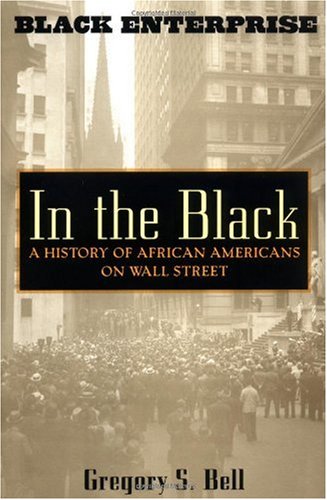
In the Black
A History of African Americans on Wall Street
کتاب های مرتبط
- اطلاعات
- نقد و بررسی
- دیدگاه کاربران
نقد و بررسی

December 24, 2001
Tough, resourceful and determined, the small band of early African-American pioneers venturing into Wall Street's fast-paced, hard-driving financial markets have not often been recognized for their achievements. Bell's history of those men who made a difference corrects that oversight. Bell (whose father, Travers Bell, worked for the New York Stock Exchange's first black-owned firm) brings an insider's view to the realm of investment banking and finance, starting with a brief biography of his family—a clan enamored with trading and brokerage, but hampered by the restraints of Jim Crow. With well-researched support and measured prose, Bell chronicles the first black attempts to penetrate the securities industry pre– and post–Civil War. Little-known facts, such as the entry of the first black registered stockbrokers and salesmen on "The Street" in the early 1940s and the importance of black firms like McGhee & Company and Patterson & Company, underline the relentless struggle these men endured. Some of the best segments come in Bell's recounting of their difficulties during the turbulent 1960s and '70s, when slow yet persistent progress was made on several fronts against discriminatory practices on Wall Street, beginning with Merrill Lynch's hiring of three black brokers in 1965. For those seeking a close, informed look at the long, heroic battle by black businessmen and brokers to seize a piece of the action on Wall Street, this book is a source—lean, informative and devoid of filler or tirades.

December 1, 2001
Wall Street has been responsible for creating an enormous amount of wealth in the United States, but according to Bell, the son of the man who founded the first black-owned member firm of the New York Stock Exchange, not much of that has found its way into the pockets of African Americans. This book, which charts the African American experience on Wall Street, doesn't contain much prior to the 1960s, but the author offers in-depth coverage of the past 40 years, showing how small, black-owned investment houses got started. Many of these small start-ups were undercapitalized, and while they grew during the good times, they frequently failed during the bad. The author suggests that the "old boy" white network was, in part, responsible for keeping blacks out, and there is some truth to that. However, the times have changed, with Wall Street investment banks actively recruiting minorities and black-owned asset management firms thriving. Unfortunately, the book suffers from spotty research and is not well written or edited. Still, this is the only book to offer much-needed research in this area and is appropriate for larger public library nonfiction collections and African American studies. Richard Drezen, Washington Post, New York City Bureau
Copyright 2001 Library Journal, LLC Used with permission.

February 15, 2002
This well-written, straightforward history of African Americans on Wall Street is peppered with both familiar and not-so-well-known names such as Joe Searles, the first black New York Stock Exchange member, and Reginald Lewis, the late head of TLC Beatrice International. Decade by decade, Bell (son of financial firm Daniels Bell cofounder Travers Bell) chronicles successes and setbacks in various segments of the industry, from brokerage firms to investment banks. Real-money deals for these firms begin to abound in the 1980s and 1990s, including the financing of Atlanta's Hartsfield Airport and the largest-ever bond offering in 1993 in Los Angeles. On the other hand, most of these firms struggled for survival, handicapped by undercapitalization as well as by more stringent SEC rulings, such as the May 1, 1975, end of fixed commissions. Today, the black American community is represented throughout all financial services (though probably in fewer numbers than originally expected), and Bell's nonglitzy narrative secures their place in Wall Street history.(Reprinted with permission of Booklist, copyright 2002, American Library Association.)

























دیدگاه کاربران